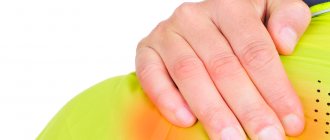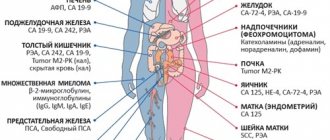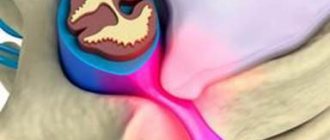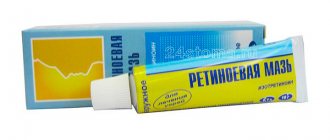According to the World Health Organization, headache is one of the most common neurological disorders and affects almost 50% of the adult population of the Earth. The treatment of headaches is underestimated throughout the world, both by patients and doctors. According to a large-scale epidemiological study MAZE1, covering European countries and America, almost half of respondents do not go to doctors with headaches. A similar situation has developed in our country, where headaches are tolerated rather than consulted by a doctor. At the same time, headaches significantly reduce the quality of life and cause real suffering that poisons life. What you need to know to choose effective and safe headache pills and in what cases you need to see a doctor.
Types of headaches
In 2005, the Second Revision of the International Classification of Headaches2 was translated into Russian, which provides principles for diagnosing headaches. According to it, headaches are divided into primary and secondary. Secondary headache occurs against the background of other diseases and pain is not the main symptom. In addition, the classification contains a diagnostic protocol. Despite this, many Russian doctors find it difficult to diagnose headaches and prescribe adequate treatment.
Research3 has shown that there are two negative trends in the diagnosis of headaches. Firstly, doctors tend to classify primary headaches as secondary, especially chronic ones. And secondly, prescribe redundant tests, although according to the international diagnostic protocol, a full examination is not carried out at the initial stage of diagnosis.
Primary forms of headache:
- Tension headache
- Migraine4,
- Cluster headache
These types of pain not only have different pain patterns, but some are characterized by additional symptoms, as, for example, in the case of migraines. The causes of these types of pain are also different, so effective treatment requires professional medical diagnosis.
Treatment of tension headaches: from old myths to modern concepts
Firstly, against the backdrop of a high need for specialized medical care, its low availability and poor awareness of the population are noted. According to an online survey of patients, more than half of the respondents (52.2%) noted constant or recurrent headaches, which significantly reduced the quality of life, but only half had consulted or were planning to consult a doctor [6]. Among the main reasons for refusing to seek medical help for headaches were: distrust of doctors and the quality of medical care (81.6%), inaccessibility of headache specialists (lack of specialists, the need to stand in line or pay for a consultation - 59.7% ).
Secondly, the problems of correct diagnosis and effective management of patients with primary headaches (migraine, tension-type headache) are still relevant. The results of a survey of doctors conducted in 2014 show that more than half of the specialists (52%) do not use the International Classification of Headaches II or III revisions (ICHD-III, 2013) in their practice. At the same time, the overwhelming majority of doctors (96%) indicate the relevance in Russia of the problem of incorrect diagnosis and treatment of patients with primary headaches. In turn, refusal to use ICHB leads not only to the formulation of deliberately incorrect “mythical” diagnoses for patients with tension-type headache or migraine (for example, discirculatory encephalopathy, vegetative-vascular dystonia, osteochondrosis of the cervical spine), but also to the prescription of ineffective therapy (nootropics, vitamin therapy, vasoactive drugs) [7]. And this, in turn, only strengthens patients’ mistrust of doctors and the ability to effectively treat headaches.
The problem of abuse of analgesics for headaches is especially relevant in Russia. The free over-the-counter availability of analgesics and uncontrolled use lead to a high (up to 4%) prevalence of drug-induced headache (DIH) [8]. Data from a survey of doctors we conducted show that specialists themselves often (40%) recommend using, for example, for tension-type headaches, combined analgesics, which, according to international recommendations and standards, are not the drugs of choice for tension-type headaches.
Based on the survey results, several initial steps can be proposed to optimize specialized care for patients with headaches:
1. Use ICHD-III criteria (2013) to diagnose forms of headaches.
2. When managing patients with the most common forms of primary headaches, be guided by European guidelines and standards, which will be discussed in detail below.
3. If there are difficulties in diagnosis and therapy, refer patients to specialized centers for the treatment of headaches.
HDN is one of the most common diseases among all population groups and ranks second in prevalence after caries. More than 1.5 billion people periodically experience tension-type headaches [1]. TTH occurs several times during the month in 24–37% of the population, about 10% have weekly episodes of TTH, while 2–3% of the population suffer from chronic TTH (CHTH) [2]. Such a high prevalence of HDN determines a heavy socio-economic burden on healthcare and society as a whole. According to many authors, the socio-economic damage from tension headaches is higher than that associated with migraine [3]. In one of the population studies, it was found that patients with episodic tension-type headache (ETTH) do not go to work on average 9 days a year due to headache and for another 5 days have a pronounced decrease in work capacity, while for chronic tension-type headache these figures reach: 27 days of missed work and 20 days of reduced performance [4]. Particularly pronounced impairment of activity and maladaptation are observed in patients with frequent and chronic forms of tension-type headache in combination with comorbid disorders: depression, sleep disorders, anxiety and somatization disorders [5].
Classification of HDN
According to the International Classification of Headaches, III Revision (ICHD-III, 2013), depending on the frequency of headache episodes, there are 3 main subtypes of tension-type headaches (Table 1) [9].
The identification of the above subtypes of TTH is associated not only with a superficial division depending on frequency, but primarily with differences in pathophysiology, the degree of impact on quality of life and different approaches to therapy. In the development of EGTH, peripheral pain mechanisms play a leading role. The chronic form of the disease is characterized by dysfunction of the central parts of nociception. Thus, it is pathophysiologically justified for EGTH to use only symptomatic drugs that relieve headache, while for frequent and CGTH, preventive therapy is required. This once again confirms the importance of correct diagnosis, consistent with ICHD-III, to determine the most effective and safe treatment strategy.
Each form of HDN is divided into two subtypes:
- Involving the pericranial muscles.
- Without involvement of the pericranial muscles.
However, there is no convincing evidence indicating differences in neurobiological mechanisms or therapeutic efficacy between these two subtypes of tension-type headache.
International standards and recommendations for the treatment of tension-type headache
Despite the widespread prevalence of TTH, only a small proportion of patients, mainly with PETH and CHTH, seek medical help. First of all, this is due to the fact that most people have NETH with a frequency of less than 1 time per month, low intensity, self-regression of headaches or high effectiveness of simple over-the-counter analgesics and little impact on quality of life. Some experts do not consider NETH as a disease and believe that it is a normal reaction of the body to external factors that does not require special medical attention [10].
It is important to note that CGTH can be combined with excessive use of analgesics and the development of PHB. Establishing the existence and extent of analgesic abuse is critical to effective therapy. In case of LIHB, it is necessary to discontinue the drug in excess, since only after this can the effect of the preventive therapy be expected.
- The “gold standard” for the treatment of tension-type headache is an individual-oriented comprehensive approach, which includes 3 main areas:
- non-drug therapies;
- pharmacotherapy of headache episodes;
- preventive treatment of frequent and chronic forms of tension-type headache.
The main directions of therapy for tension-type headache are presented in Table 2.
The first step to successful therapy is to identify the clinical pattern of tension-type headache and make the correct diagnosis according to the ICHD III revision. How often does headache occur? What is the location and duration of the pain syndrome? What symptoms accompany the pain? Is there seasonal variability in GB? What are the main provocateurs of GB? How much and what medications does the patient receive for hypertension during a week or month? Major comorbid psychological and physical disorders? Keeping a headache diary provides significant assistance in accurately answering these questions. Analysis of headache diary data allows not only to clarify the clinical signs of cephalgia, but also to identify predisposing and provoking factors with their subsequent correction during therapy.
The second step to determine treatment tactics is to clarify the degree of impairment of quality of life. It is important to get answers to the questions: how often does the patient miss work days due to hypertension, how often and to what extent is his work capacity and daily activity reduced due to hypertension? To objectify the data obtained and monitor the effectiveness of therapy, it is recommended to use specially developed questionnaires and scales. One of the most convenient is the HIT-6 test (Assessing the Impact of Hypertension on Daily Activities). The degree of influence of hypertension on the quality of life of a particular patient is a mandatory criterion for choosing a therapeutic strategy [11].
Cognitive behavioral therapy at the initial stage is one of the most important components of the treatment of patients with frequent and chronic variants of tension-type headache. Already at the initial examination, it is necessary to explain to the patient the benign nature of the disease, its causes, the main provoking factors, the role of psycho-emotional and muscle tension, violations of the daily routine, stressful situations, the main goals of treatment, as well as the importance of normalizing lifestyle (observance of a sleep schedule, regular nutrition and sufficient volume of fluid intake, regular health-improving sports activity) [12].
Non-drug approaches to the treatment of tension-type headache
The importance of non-pharmacological approaches cannot be underestimated during the treatment of tension-type headache. The majority of patients with tension-type headache show improvement with the use of basic non-drug methods, such as sleep hygiene, regular health-improving sports activity, adherence to diet and exclusion of provocateurs, relaxation methods, biofeedback (BF) and cognitive behavioral therapy (Table 3) .
Maintaining a sleep schedule is an integral part of preventing frequent episodes of tension-type headache.
It is known that regular health-improving sports (mainly aerobic) exercise has a positive effect on the course of tension-type headache [13].
Clinical experience and data from controlled studies show the effectiveness of biofeedback using myographic electrodes (EMG biofeedback). Experimental studies indicate activation of antinociceptive systems with an increase in the level of β-edorphins in the blood plasma during the use of biofeedback [14].
A significant therapeutic effect is observed when using psychological and psychotherapeutic correction. The effectiveness of progressive muscle relaxation, hypnosis and self-hypnosis, breathing-relaxation training, autogenic training, cognitive behavioral therapy, and IRT has been proven [15, 16].
Basic approaches to symptomatic treatment of pain syndrome with tension-type headache
Individual episodes of tension-type headache can be short-term (30–120 minutes) and resolve on their own with rest, the use of relaxation methods, and sleep. Determining the need to use analgesics for tension-type headache depends primarily on the degree of influence of the pain syndrome on daily activity and quality of life.
In case of long-term episodes of tension-type headache, it is necessary to relieve the pain syndrome as quickly as possible in order to reduce the risk of chronic tension headaches and to fully restore the patient’s activity as soon as possible.
In most cases, with TTH, patients use over-the-counter drugs from the groups of simple (non-steroidal anti-inflammatory drugs (NSAIDs), paracetamol) and combined analgesics, guided by their own or other people’s experience, the opinion of the pharmacist at the pharmacy, but without any medical advice.
Basic recommendations for symptomatic treatment of tension-type headache [17]:
1. It is more effective to use analgesics at the beginning of an episode of tension-type headache. An increase in headache intensity can lead to a decrease in the analgesic effect of drugs and the taking of a larger dosage.
2. Individual selection of an effective dosage of an analgesic. In most cases, it is recommended to use maximum initial dosages in order to prevent relapse of pain and repeated use of the drug. Low doses of analgesics may be effective in some patients, in which case the dosage is increased only if the effectiveness of pain relief decreases.
3. A high level of effectiveness and a reduction in the overall dosage of analgesics is ensured by the use of special fast-acting forms (for example, the fast-acting form of ibuprofen Nurofen Express Forte 400 mg).
4. With an increase in the frequency of headaches, as well as with chronic headache in combination with comorbid psycho-emotional disorders, there is a tendency for the effectiveness of painkillers to decrease. In such a situation, preventive therapy is recommended. In addition, in order to prevent LIHB, it is necessary to clearly limit the amount of analgesics used:
- containing barbiturates – up to 3–4 times a month;
- triptans – up to 9 times a month;
- simple analgesics and NSAIDs - up to 15 doses per month.
In order to assess the effectiveness of analgesics for TTH, the following modified criteria are used:
1. Absence of headaches 2 (maximum 4) hours after taking the drug.
2. Prolonged effect, no recurrence of headaches.
3. Complete restoration of the patient’s daily activity on the day of taking the analgesic.
4. Good tolerability of treatment, absence of adverse drug reactions (ADRs).
Treatment is considered ineffective if 2 or more of these criteria are not met [18].
The first choice drugs for relieving an episode of TTH are simple analgesics (paracetamol, acetylsalicylic acid), as well as NSAIDs (ibuprofen (Nurofen), ketoprofen, naproxen) [17]. Initially, according to clinical studies, similar effectiveness of paracetamol, acetylsalicylic acid and ibuprofen was assumed. However, data from controlled studies indicate that ibuprofen is more effective for TTH.
One of the first randomized studies showed a high analgesic effect of 400 mg ibuprofen in patients with EGTH [19]. Data from a double-blind, placebo-controlled study convincingly demonstrate a more pronounced analgesic effect of 400 and 800 mg ibuprofen in patients with TTH compared with placebo [20]. Comparative clinical studies have shown that ibuprofen at a dose of 400 mg is significantly more effective in relation to 1000 mg of paracetamol and 500 mg of acetylsalicylic acid [21, 22].
A significant breakthrough in headache pain relief is associated with the creation of fast-acting forms of NSAIDs, in particular ibuprofen.
B. Packman et al. found that fast-acting ibuprofen at a dosage of 400 mg (Nurofen Express Forte) began to act significantly earlier than paracetamol 1000 mg (p<0.001). Within 3 hours after taking fast-acting ibuprofen, 75% of patients (32% when using paracetamol) experienced complete regression of pain (Fig. 1) [23].
According to a systemic review, fast-acting forms of ibuprofen (Nurofen Express Forte) act significantly faster and have a more pronounced and prolonged analgesic effect (Fig. 2) [24]. The use of fast-acting forms prevents the reuse of analgesics.
According to current recommendations of the European Federation of Neurological Societies (EFNS), ibuprofen (dosage from 200 to 800 mg depending on the form) is among the drugs with the highest level of evidence for the relief of tension-type headache. This group also includes paracetamol, acetylsalicylic acid, ketoprofen, naproxen and diclofenac. However, given the evidence-based effectiveness and low incidence of ADRs, ibuprofen is considered a first-choice drug. Relief from TTH when taking Nurofen Express Forte begins within 15 minutes, providing a quick and pronounced analgesic effect.
Second-line drugs include combination caffeine-containing analgesics; their use in TTH is effective, but is limited by the increased risk of developing TTH. For the same reason, it is not recommended to use drugs containing codeine and barbiturates for tension headaches.
There is no reliable data showing the effectiveness of muscle relaxants for tension-type headache. Accordingly, these drugs are not indicated for the relief of tension-type headache.
The main reasons for the failure of therapy:
1. The diagnosis of HDN was made incorrectly. There are at least two possible reasons for this situation:
1.1. Most often, TTH is misdiagnosed in patients with migraine without aura. Misdiagnosis is mainly associated with superficial questioning of the patient.
1.2. Much less often, secondary headache occurs under the mask of tension headache, which requires a thorough examination in order to clarify the true cause of cephalalgia.
2. Incorrect selection of pharmacotherapy: low doses, late administration of the drug at the time of the highest intensity of headache, individual intolerance to the drug.
3. The low effectiveness of analgesics in TTH may be associated with the chronic nature of TTH and the formation of LPH. In such situations, the first step is to discontinue the drug of abuse and begin preventive treatment.
4. Unrealistic expectations of patients (for example, relief of headaches within 5 minutes of starting the drug), severe concomitant psychiatric disorders (depression, anxiety disorders).
Preventive therapy
The main goals of preventive treatment are:
1. Reducing the frequency, duration and intensity of headaches.
2. Increasing the effectiveness of symptomatic analgesic therapy.
3. Restoring the patient’s daily activity and quality of life.
Before starting preventive pharmacotherapy, it is necessary to make sure that non-drug treatment methods are insufficiently effective. This is quite important, because, according to comparative clinical studies, behavioral therapy, breathing-relaxation training, psychological correction, and especially EMG biofeedback, often have an effectiveness comparable to a course of antidepressants.
Taking into account the frequent combination of tension-type headaches with anxiety, personality disorders and depression, the choice of preventive treatment should take into account comorbid pathology. The drugs of first choice are antidepressants (amitriptyline, mirtazapine, venlafaxine); the evidence base for anticonvulsants (topiramate, gabapentin), muscle relaxants (tizanidine) and botulinum toxin type A is much smaller [17]. Topiramate (100 mg/day in 2 doses), gabapentin (1600–2400 mg/day), tizanidine (4–12 mg/day) can be recommended as reserve drugs for the preventive treatment of tension-type headache in case of ineffectiveness or intolerance of antidepressants. At the same time, the use of botulinum toxin type A preparations is currently not approved for the preventive treatment of tension-type headache [25].
The greatest effectiveness in chronic hypertension is observed with the use of amitriptyline. It is recommended to use the minimum effective dosage (30–75 mg/day), selected individually for each patient. According to EFNS recommendations, second-line drugs are mirtazapine (30 mg) and venlafaxine (150 mg). Practical experience and current data indicate the ineffectiveness of the use of selective serotonin reuptake inhibitors in patients with chronic hypertension [26]. However, drugs from this group can be used to treat comorbid anxiety and depressive disorders in patients with tension-type headache.
The ineffectiveness of CHF therapy is often associated with improperly administered pharmacotherapy, the use of inactive doses, short courses of treatment, and rapid dose increases. These errors lead to a lack of therapeutic effect, the development of ADRs and treatment discontinuation. Therefore, for the effective and safe use of antidepressants, careful adherence to certain principles is required:
1. Start therapy with minimal dosages, gradually increase the dose until clinical improvement is obtained, individual selection of the drug to the minimum effective dosage (for example, amitriptyline at an initial dosage of 10–12.5 mg in the evening before bed, a gradual increase by 10–12.5 mg at every 2-3 weeks until significant clinical improvement is achieved).
2. Compliance with the duration of therapy (usually at least 6 months). It should be remembered that therapeutic improvement may occur only after 4–6 weeks. taking the drug and increase over 3 months.
3. In the presence of LIHB, it is important to completely abolish the drug of abuse and generally limit the use of analgesics. Otherwise, preventive therapy will be ineffective.
4. The use of headache diaries is mandatory to evaluate therapy and follow-up.
5. Gradual withdrawal of therapy.
Conclusion
Treatment and prevention of tension-type headache is a complex multidisciplinary task that requires the development of strategies for correcting daily activities, interpersonal relationships, and psychological correction. Non-drug therapy methods are of high importance. For symptomatic treatment of tension-type headache, early use of analgesics is recommended, of which ibuprofen and acetylsalicylic acid are the first choice drugs. It is optimal to use fast-acting forms of analgesics, in particular ibuprofen (Nurofen Express Forte 400 mg), which have proven their rapid and high effectiveness. An integrated approach to therapy is the key to reducing the frequency and intensity of headaches, and therefore normalizing daily activities. It is important to take into account the individual characteristics of patients when drawing up a treatment program, such as: age, gender, metabolic characteristics, concomitant somatic and endocrine pathology, comorbid disorders, abuse factor, characteristics of interpersonal relationships. Dynamic supervision of a specialist is necessary for all patients from risk groups: CHF, LIHB, PETH with the presence of distinct comorbid disorders.
Causes of headaches
| Causes | |
| Tension headache (tension headache) |
|
| Migraine |
|
| Cluster pain |
|
Relieve tension
Tension headaches are a common problem for people whose jobs involve high levels of concentration, responsibility, and stress.
The prevalence of this type of pain in the world ranges from 46 to 78%. Statistically, tension headaches lead to more missed work days than migraines. There are three categories of tension headaches: infrequent episodic, frequent episodic and chronic. Doctors usually advise treating headaches with over-the-counter analgesics. However, with frequent and chronic pain, medications soon stop helping.
Massage helps treat headaches. Scientists conducted an experiment: over the course of 4 weeks, they conducted four treatment sessions for participants in two groups. For the first group, therapy included massage and manipulation of the cervical spine, for the second group - only massage. 8 weeks after the experiment, participants in both groups showed significant improvement in performance.
A course of relaxing massage, gentle manual practices, and osteopathic techniques can be an effective method of reducing the frequency and intensity of headaches. But if this is not possible, then an independent head massage will help relieve the spasm that is causing the problem.
Cervical exercises can also help situationally: bending and turning the neck will improve blood circulation and reduce the intensity of pain.
But you should be careful with circular movements, they can provoke spinal tension.
If the pain is caused by mild stress or fatigue, you can use breathing practices, meditation and other methods that reduce arousal.
General rules for the use of painkillers for headaches
Treatment of headaches requires a comprehensive approach, but according to international recommendations, treatment of migraine and tension-type headaches should begin with a non-narcotic analgesic or non-steroidal anti-inflammatory drug (NSAID).
An integrated approach involves treatment not only with pain pills, but also with non-drug medications aimed at relieving stress, improving diet and sleep.
Since even the mildest headache reduces the quality of life, it is important not to delay treatment. It is important to remember here that abuse of painkillers can lead to chronic pain. Therefore, the dosage of the drug must be selected by a doctor.
Causes of drug-induced migraine
Medicinal migraine occurs when painkillers are abused, explains neurologist at the Headache and Autonomic Disorders Clinic, Academician Alexander Vein, Associate Professor of the Department of Nervous Diseases of Moscow State Medical University. THEM. Sechenova Nina Latysheva. Taking analgesics more than twice a week is addictive. The lifespan of the tablet is reduced. A person takes analgesics more often and becomes dependent.
Symptoms of headaches from the reverse effect of analgesics were described by a group of Russian scientists from the Moscow Federal State Budgetary Institution "Scientific Center of Neurology" and the Federal State Budgetary Educational Institution of Higher Education "Moscow State Medical and Dental University named after. A.I. Evdokimov." This pain is daily and varies in intensity. Pain increases with physical or emotional stress and discontinuation of medications.
It is not always easy to identify the causes of migraine, and sometimes it is impossible without a full examination.
Doctors at Germany's Essen University Hospital have described drug overuse as a global problem, with up to 4% of people overusing analgesics and other drugs to treat migraines and 1% of people in Europe, North America and Asia experiencing medication-induced headaches.
In Russia, patients also face headaches due to medications. German scientists from the University of Bochum, the Norwegian University of Science and Technology and the Russian Academy of Sciences examined 2,725 adults in 35 cities and nine villages in Russia. 213 (10.5%) respondents reported headaches 15 times a month or more often, 145 of them (68.1%) abused medications.
Scientists from the American Academy of Neurology have found out how long it takes to get used to drugs. The shortest period was for triptans - 1.7 years, for ergot - 2.7 years, for analgesics - 4.8 years. Patients who overused ergots and analgesics reported daily tension-type headaches (TTH), and patients who took triptans described migraine-like headaches or an increase in migraine attacks.
Be careful, some drugs are addictive.
Simple analgesic
Their effectiveness has been proven in the most reliable type of study5 - a randomized, double-blind, placebo-controlled study. Only with the help of such studies is it possible to form an evidence base on the effectiveness and safety of the drug. The European Federation of Neurological Societies recommends the following substances for the treatment of headaches:
| A drug | Dose |
| ASK | 1000 mg |
| Ibuprofen | 200-800 |
| Paracetamol | 1000 |
| Naproxen | 500-1000 |
| Diclofenac | 50-100 |
| Metamizole | 1000 |
| Tolfenamic acid | 200 |
| Phenazone | 1000 |
Combined analgesics
They consist of two or more substances and are used when the pain is severe and a simple analgesic does not cope.
Many combination analgesics contain barbiturates, codeine and caffeine, which enhance the effect of the simple analgesic. However, it has been proven that they can cause overuse headaches, i.e. headaches caused by excessive drug intake.
Symptoms
- Headache
- Pain in the neck
- Headaches worsen with exertion, coughing, bending or moving the head
- Dizziness
- Double vision
- Memory disorders
- Loss of appetite
- Hearing impairment
- Nausea and vomiting
- Changes in sense of smell or taste
- Problems concentrating
- Tinnitus
- Noise sensitivity
- Sensitivity to light
- Anxiety
- Depression
- Sleep problems
- Muscle spasms in the head, neck, back and shoulders
- Fatigue
Diagnostics
The International Headache Society defines criteria for post-traumatic headache such as:
- Headache that does not have typical characteristics and meets criteria C and D
- Having a head injury with all of the following symptoms:
- Without and with loss of consciousness, which lasted no more than 30 minutes
- Glasgow Coma Scale score (which is used to assess level of consciousness after traumatic brain injury) is equal to or greater than 13
- Symptoms that are diagnosed as a concussion
- Headache develops within seven days after traumatic brain injury
- One or other of the following:
- Headache resolves within three months after head injury
- The headache has not disappeared, but the injury was less than three months ago
To diagnose this type of headache, as a rule, such types of studies as MRI, CT, PET, EEG are used, since it is necessary to clearly visualize morphological changes in brain tissue and exclude life-threatening conditions.
Consequences
Any disease that is not treated in a timely manner has its consequences for a person. In some cases, the consequences are minimal and go away with proper therapy. Sometimes it happens that a seemingly “frivolous” disease, like a snowball, gains momentum, turning into truly catastrophic consequences for a person. In the case of the abuse factor, sleep disturbances and increased headaches are noted, nausea appears and excessive anxiety appears.
These symptoms last from several hours to 6-8 days, depending on the severity of the initial condition. Therefore, doctors recommend taking care of sick leave or a short vacation in advance during treatment. This measure will allow you to endure the withdrawal of painkillers and sedatives in the most comfortable conditions and without additional stress. As a rule, 2 weeks after stopping medications that provoke abuse factor, the intensity of headaches decreases by more than 50%.









